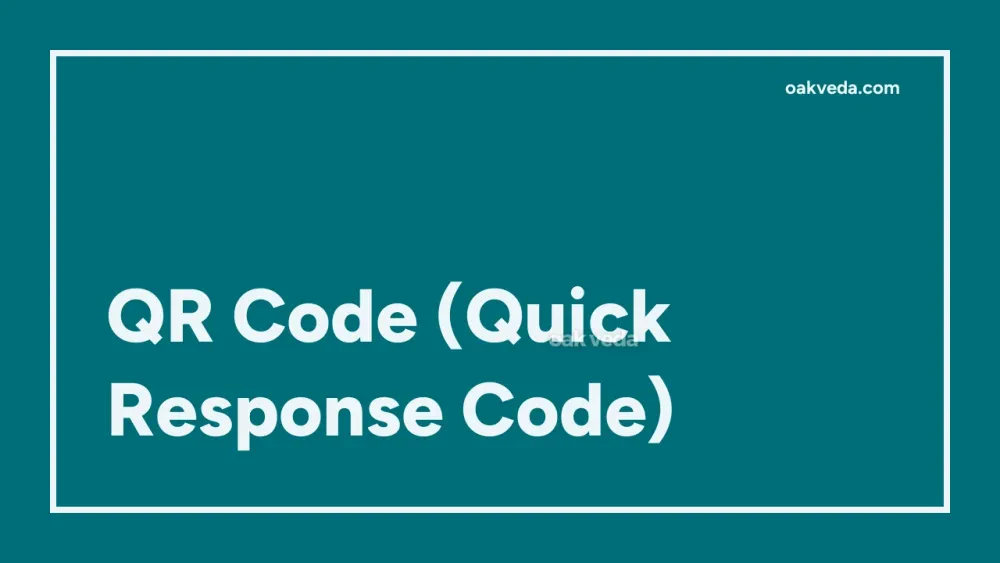
What is the Full Form of QR Code?
The full form of QR Code is Quick Response Code. This two-dimensional barcode has revolutionized the way we access information and interact with products and services in our daily lives.
What is Quick Response Code?
A Quick Response Code, commonly known as a QR code, is a type of matrix barcode that contains information in both vertical and horizontal directions. It consists of black squares arranged on a white background, forming a unique pattern that can be quickly read by digital devices such as smartphones and dedicated QR code scanners.
Origin and Development of Quick Response Code
The Quick Response Code was invented in 1994 by Denso Wave, a Japanese automotive company subsidiary. Initially developed to track vehicles during the manufacturing process, QR codes quickly gained popularity due to their ability to store more information than traditional barcodes and their ease of scanning.
How does Quick Response Code work?
QR codes function by encoding data into a two-dimensional grid of black and white squares. When scanned by a compatible device:
- The device's camera captures the QR code image
- The QR code reader software analyzes the pattern
- The software decodes the information stored in the code
- The device then performs the intended action, such as opening a website or displaying text
Types of Quick Response Code
There are several types of QR codes, including:
- Static QR codes: Contain fixed information that cannot be changed after creation
- Dynamic QR codes: Allow for updating the linked content without changing the code itself
- Micro QR codes: Smaller versions for limited space applications
- iQR codes: Rectangular QR codes that can be customized in shape and size
Functions of Quick Response Code
QR codes serve various functions, such as:
- Linking to websites or social media profiles
- Providing product information
- Facilitating mobile payments
- Storing contact information (vCards)
- Offering Wi-Fi network access
Applications of Quick Response Code
The versatility of QR codes has led to their widespread adoption across industries:
- Retail: Product information, discounts, and loyalty programs
- Marketing: Promotional campaigns and interactive advertisements
- Hospitality: Menu access, contactless check-ins, and guest feedback
- Healthcare: Patient identification and medical record access
- Education: Interactive learning materials and attendance tracking
Features of Quick Response Code
Key features of QR codes include:
- High data capacity: Can store up to 7,089 numeric characters or 4,296 alphanumeric characters
- Fast readability: Can be scanned quickly from various angles
- Error correction: Can still be read even if partially damaged or obscured
- Compact size: Stores more information in less space compared to traditional barcodes
- Versatility: Can be used on various surfaces and materials
Benefits of Quick Response Code
QR codes offer numerous advantages:
- Convenience: Easy to scan with smartphones, eliminating the need for special equipment
- Cost-effective: Inexpensive to create and implement
- Contactless interaction: Ideal for touchless transactions and information sharing
- Data tracking: Allows businesses to monitor engagement and gather analytics
- Customization: Can be designed to incorporate logos or brand colors
Limitations or Challenges of Quick Response Code
Despite their benefits, QR codes face some challenges:
- Dependence on smartphone technology and internet connectivity
- Potential security risks if users are directed to malicious websites
- Aesthetic concerns when integrating QR codes into design-sensitive materials
- User adoption barriers in some demographics
Future Developments in Quick Response Code Technology
The future of QR code technology looks promising, with potential advancements including:
- Enhanced security features to prevent fraud and malicious use
- Integration with augmented reality (AR) for immersive experiences
- Improved aesthetics through invisible or artistic QR code designs
- Expansion into new sectors such as blockchain and cryptocurrency
FAQs on QR Code Full Form
-
What does QR in QR Code mean? QR stands for Quick Response, indicating the code's ability to be rapidly scanned and processed.
-
How is a QR code different from a barcode? QR codes are two-dimensional and can store more information than traditional one-dimensional barcodes.
-
Can QR codes be used offline? Yes, some QR codes can be used offline to display static information or trigger device actions.
-
Are QR codes safe to scan? Generally, yes, but users should be cautious when scanning codes from unknown sources.
-
Can I create my own QR code? Yes, there are many free online tools and software applications available for creating QR codes.
In conclusion, the full form of QR Code – Quick Response Code – represents a technology that has significantly impacted how we interact with information in the digital age. From its humble beginnings in the automotive industry to its current widespread use across various sectors, QR codes have proven to be a versatile and efficient tool for data sharing and access. As technology continues to evolve, we can expect QR codes to adapt and find new applications, further cementing their place in our increasingly connected world.
You may be interested in:

